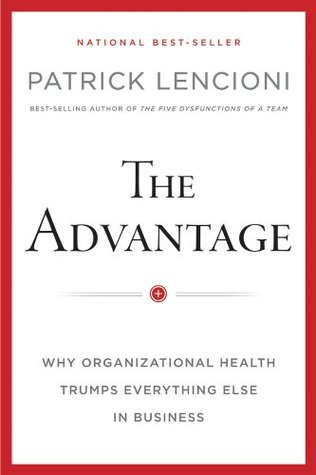More on this book
Community
Kindle Notes & Highlights
Read between
August 20 - September 2, 2019
Bringing the right people into an organization, and keeping the wrong ones out, is as important as any activity that a leadership team must oversee. Though few leaders will dispute this, not many organizations are good at doing it, for a variety of reasons.
The best approach to hiring is to put just enough structure in place to ensure a measure of consistency and adherence to core values—and no more. That’s right.
In fact, if someone were to offer me one single piece of evidence to evaluate the health of an organization, I would not ask to see its financial statements, review its product line, or even talk to its employees or customers; I would want to observe the leadership team during a meeting. This is where values are established, discussed, and lived and where decisions around strategy and tactics are vetted, made, and reviewed. Bad meetings are the birthplace of unhealthy organizations, and good meetings are the origin of cohesion, clarity, and communication.
The purpose of these daily administrative check-ins is simply to get the team accustomed to talking on a regular basis and to provide a forum for addressing the uber-tactical kinds of issues that get in the way of more important issues at staff meetings.
The most powerful impact of having teams meet every day is the quick resolution of minor issues that might otherwise fester and create unnecessary busywork for the team.
A big part of the beauty of the daily check-in is that leaders know they’re going to see their colleagues within twenty-four hours, so rather than firing off an e-mail or a voice mail or interrupting someone in the course of their day, they simply make a note to bring up a small issue at the next day’s meeting.
The truth is, there is no more valuable activity in any organization than the regular staff meeting of a leadership team.
Instead of putting together an agenda ahead of time, team members need to come together and spend their first ten minutes of a meeting creating a real-time agenda. That involves two steps. First, the leader needs to go around the room and ask every member of the team to take thirty seconds to report on the two or three key activities that they believe are their top priorities for the week. Notice that I said “that they believe are their top priorities.”
The thesis behind all of this is worth repeating: a great deal of the time that leaders spend every day is a result of having to address issues that come about because they aren’t being resolved during meetings in the first place. That’s why it’s really hard for executives to make a credible case for spending less time in meetings, assuming those meetings are good ones.
Finally, it’s important to remember that at the end of every meeting, with the exception of the daily check-ins, team members must stop and clarify what they’ve agreed to and what they will go back and communicate to their teams.
the person in charge of an organization’s leadership team is crucial to the success of any effort to build a healthy organization.
There is just no escaping the fact that the single biggest factor determining whether an organization is going to get healthier—or not—is the genuine commitment and active involvement of the person in charge. For a company, that’s the CEO. For a small business, it’s the owner. For a school, it’s the principal. For a church, it’s the pastor. For a department within a company, it’s the department head.
Because when an organization is healthy (when the leader at the top is doing his or her most important job), people find a way to get things done. When an organization is unhealthy, no amount of heroism or technical expertise is going to make up for the confusion and politics that take root.


